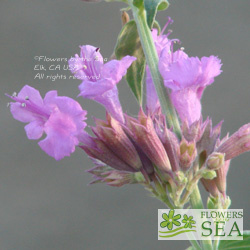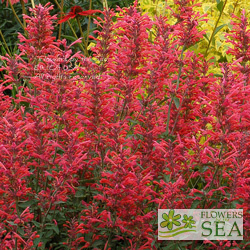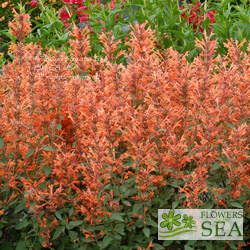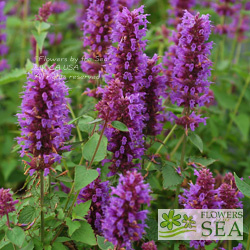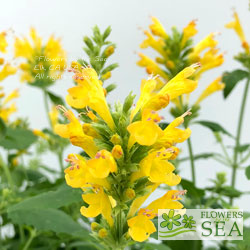Anise Hyssop - Agastache
Agastaches are full-sun plants with floriferous plumes of tiny, tubular flowers and foliage that ranges from tiny, needle-like leaves to large, fleshy basal rosettes. Species from the Southwest and Mexico are particularly tolerant of heat and drought. In general, these plants grow better in low fertility soils; give them too much nitrogen and they become floppy. (Propagation by seed also tends to produce lax form.) Similar to Salvias, they need soil with good drainage.
Agastache flowers are magnets for butterflies, honeybees and hummingbirds. The allure for pollinators is even stronger when these plants are mixed with nectar-rich Salvias (sages). Deer tend to avoid plants from both genuses.
Related Blog entries for plants in the Anise Hyssop - Agastache
Hummingbirds love Agastache. Mr. Sage explains that just because one kind of Agastache is wrong for your climate, it doesn't mean they all are and that the genus is native to most of the United States. Ask Mr. Sage is a regular feature in our Everything Salvias Blog that answers customer questions.
| Name | Mature height | Mature width | Flower color | Bract color | Exposure |
|---|---|---|---|---|---|
| Agastache x 'Ava' | 3 to 4 feet | 2 to 3 feet | Not yet defined * | Not yet defined * | Full sun |
| Agastache x 'Kudos Coral' | 1 to 2 feet | 1 to 2 feet | Not yet defined * | Not yet defined * | Full sun |
| Agastache x 'Kudos Mandarin' | 1 to 2 feet | 1 to 2 feet | Not yet defined * | Not yet defined * | Full sun |
| Agastache 'Blue Boa' | 2 to 3 feet | 2 to 3 feet | Not yet defined * | Not yet defined * | Full sun |
| Agastache x 'Poquito Butter Yellow' | 1 foot or less | 1 to 2 feet | Not yet defined * | Not yet defined * | Full sun |

